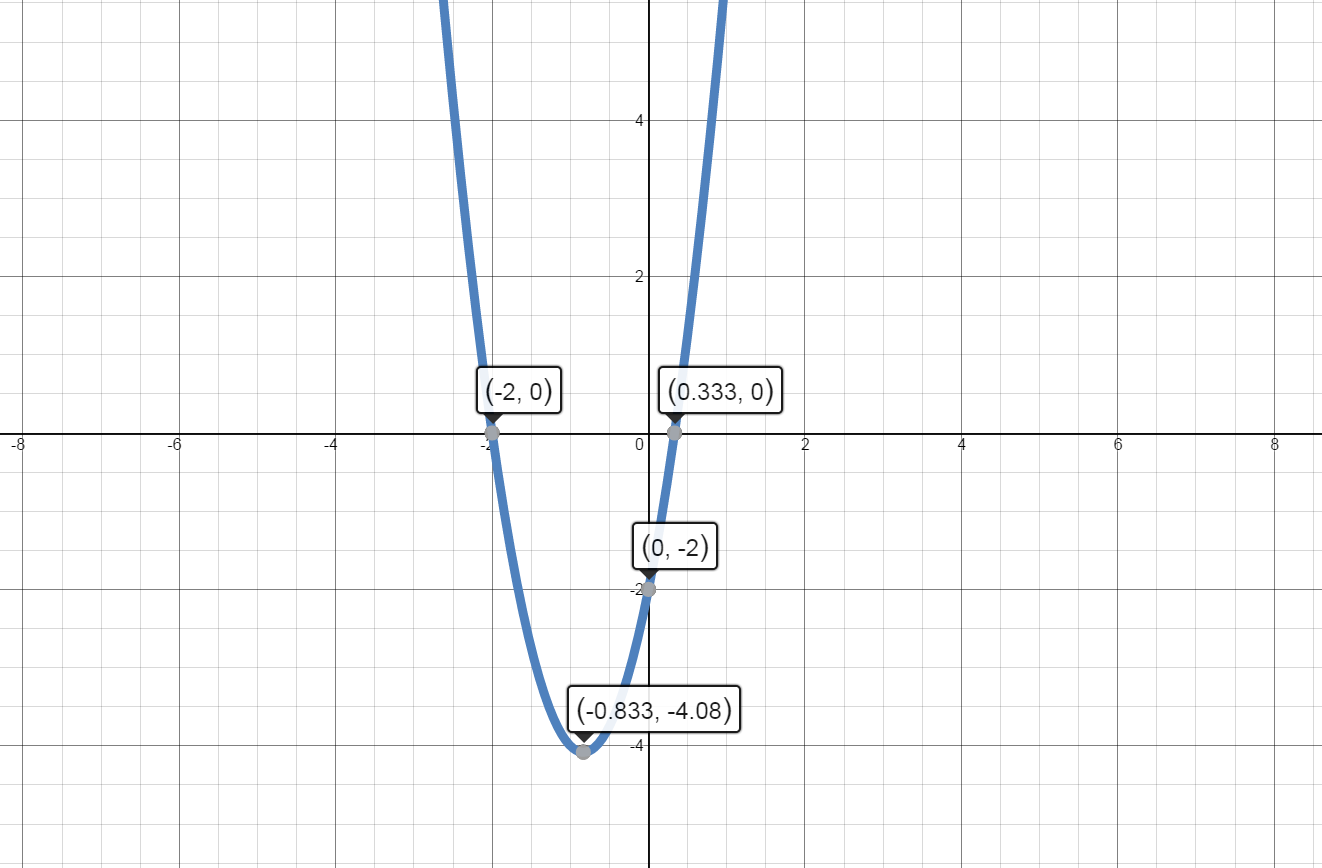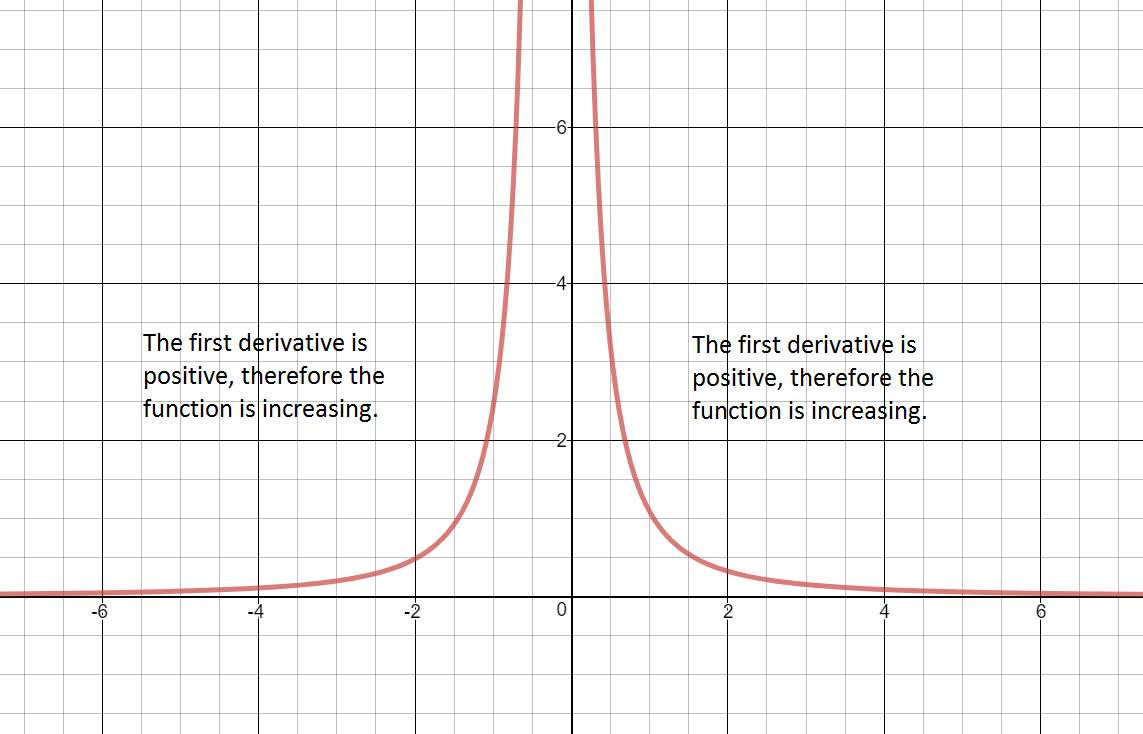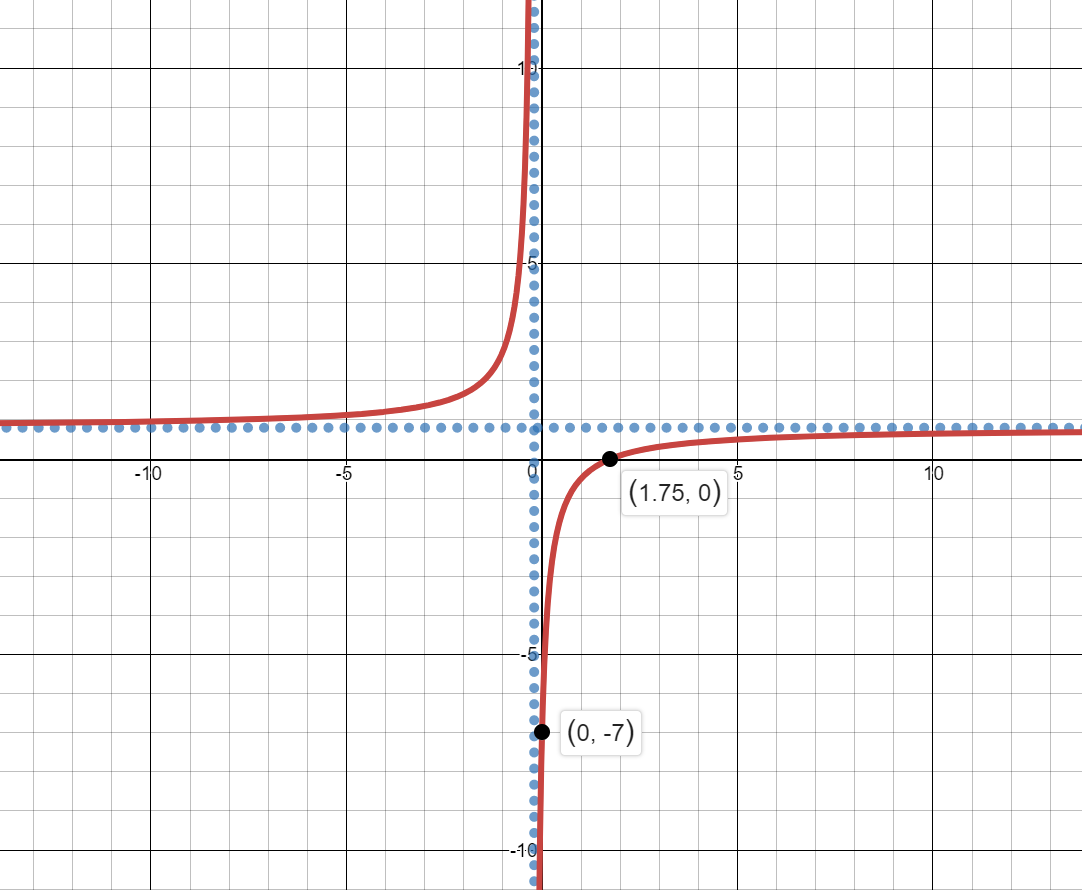3.2 First Derivative Test
Pre-Class:
- Complete 3.1 Homework assignment: check and correct.
- Take notes on the videos and readings (use the space below).
- Complete the 3.2 Pre-Class Quiz.
First Derivative Test
Analyze $f'(x)$ to Identify Intervals of Increase/Decrease and Extrema on the Graph of $f(x).$
- Find $f'(x)$
- Identify all critical numbers and partitions for the function.
- Values of $x$ where$f'(x)=0$ are critical numbers.
- Values of $x$ where $f'(x)$ is undefined are partitions.
- Values of $x$ where $f(x)$ is undefined are partitions.
- Graph the critical numbers and partitions on a number line, separating the number line into intervals.
- Determine the intervals on which $f(x)$ is increasing /decreasing
- Test one point contained in the interval (do not use the end points of the interval).
- $f'(x)<0$ then the function $f(x)$ is DECREASING on the interval
- $f'(x)>0$ then the function $f(x)$ is INCREASING on the interval
- Identify local maxima and minima of $f(x)$ using the First Derivative Test.
- On the interval $(a,c)$, a local maximum occurs at $f(b)$ when $f(x)$ is increasing for all $x$ in the interval $(a,b]$ and $f(x)$ is decreasing for all $x$ in the interval $[b,c)$.
- On the interval $(a,c)$, a local minimum occurs at $f(b)$ when $f(x)$ is decreasing for all $x$ in the interval $(a,b]$ and $f(x)$ is increasing for all $x$ in the interval $[b,c)$.
Use the First Derivative Test to analyze the function. Identify intervals of increase/decrease and extrema on the graph of the function.
-
$f(x)={{x}^{3}}+6{{x}^{2}}+9x$
-
Increasing and Decreasing
${f}'(x)=3{{x}^{2}}+12x+9$
Values of x where ${f}'(x)=0: \quad 3{{x}^{2}}+12x+9=0$
$3\left( x+3 \right)\left( x+1 \right)=0$
$3 \neq 0$
$x=-3$
$x=-1$
Values of x where ${f}'\left( x \right)$ is undefined:
There are no values of x where ${f}'\left( x \right)$ is undefined.
Values of x where $f\left( x \right)$ is undefined:
There are no values of x where $f\left( x \right)$ is undefined.
Separate into intervals using: $x=-3$ and $x=-1$.
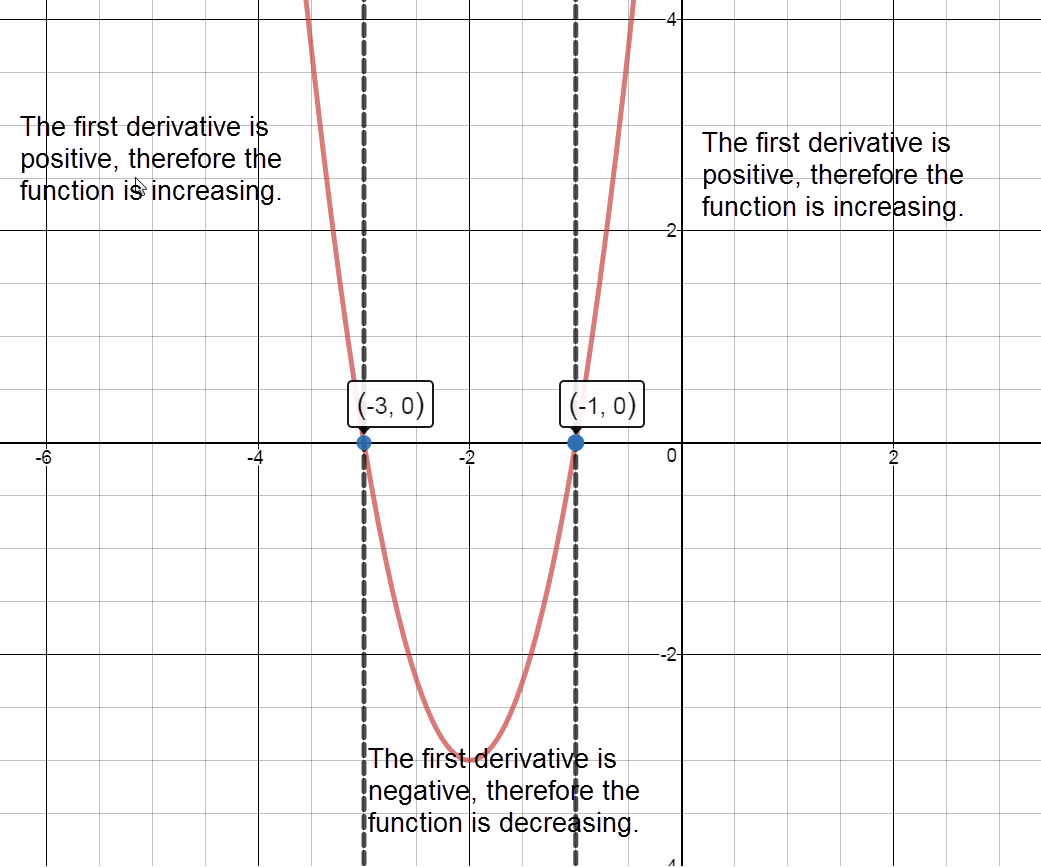
Sign graph of ${f}'(x)$ reading left to right: positive, ${f}'\left( -3 \right)=0$, negative, ${f}'\left( -1 \right)=0$, positive Increasing:
The graph of $f(x)$ is increasing on the intervals $\left( -\infty ,-3 \right)\cup \left( -1,\infty \right)$.
Decreasing:
The graph of $f(x)$ is decreasing on the interval $\left( -3,-1 \right)$.
-
Local Maxima:
$f\left( -3 \right)={{\left( -3 \right)}^{3}}+6{{\left( -3 \right)}^{2}}+9\left( -3 \right)=0$
There is a local maximum at the point $\left( -3,0 \right)$.
Local Minima:
$f\left( -1 \right)={{\left( -1 \right)}^{3}}+6{{\left( -1 \right)}^{2}}+9\left( -1 \right)=-4$
There is a local minimum at the point $\left( -1,-4 \right)$.
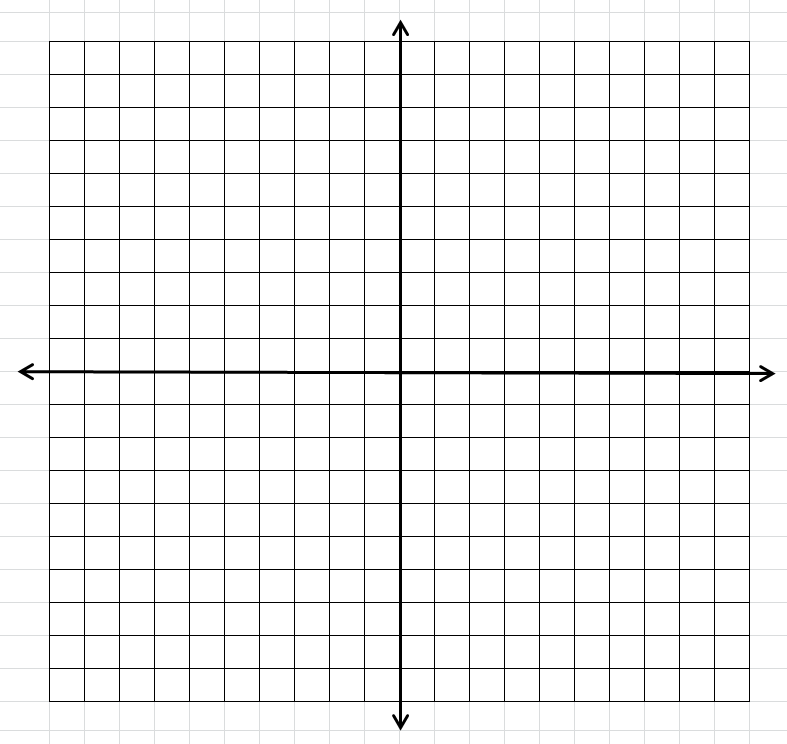
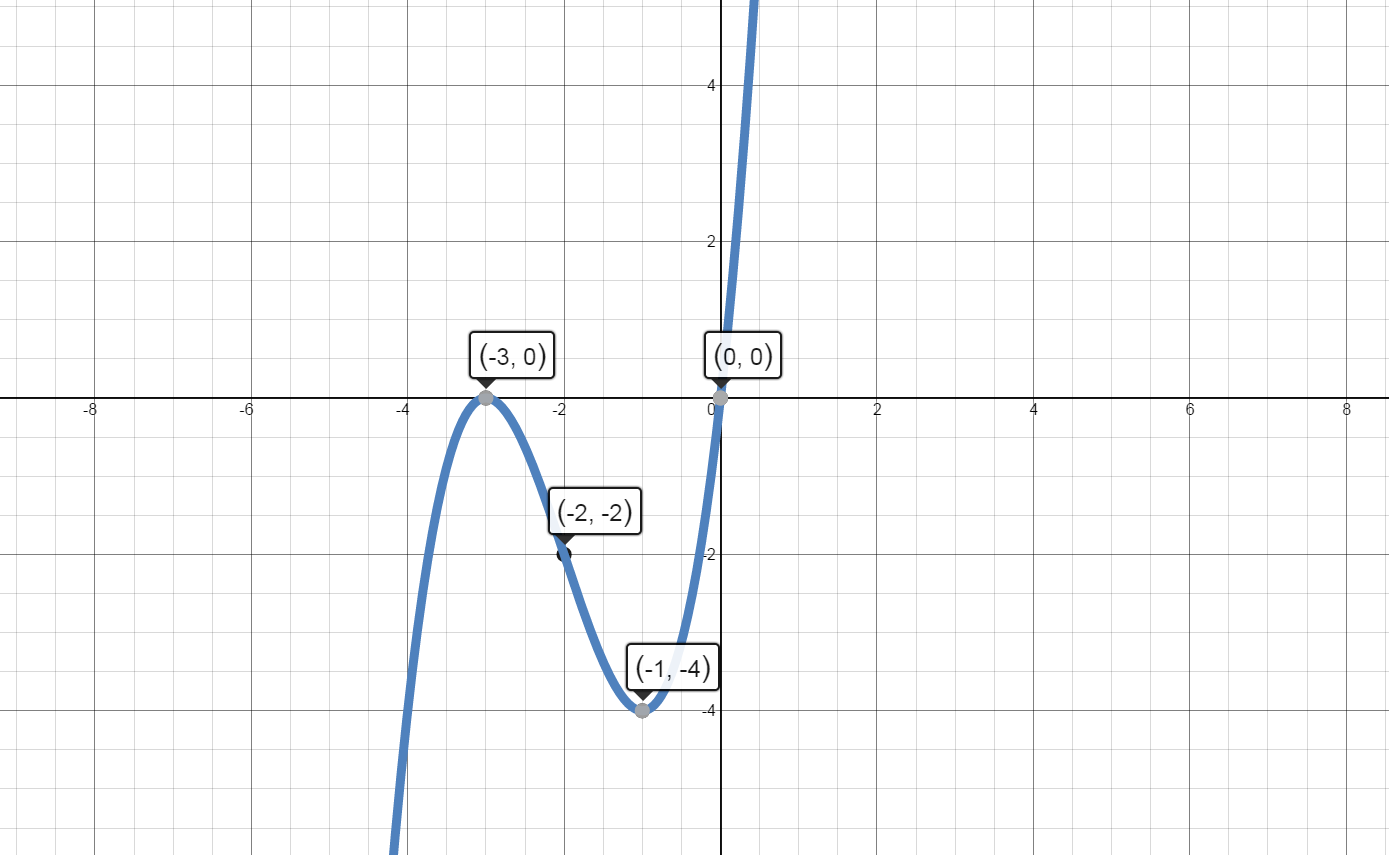
-
-
$f(x)=\frac{3x+4}{2x-5}$
-
Increasing and Decreasing
${f}'\left( x \right)=\frac{3\left( 2x-5 \right)-2\left( 3x+4 \right)}{{{\left( 2x-5 \right)}^{2}}}=\frac{6x-15-6x-8}{{{\left( 2x-5 \right)}^{2}}}=\frac{-23}{{{\left( 2x-5 \right)}^{2}}}$
Values of x where ${f}'\left( x \right)=0:$
$\frac{0}{1}=\frac{-23}{{{\left( 2x-5 \right)}^{2}}}$
$-23 \neq 0$. There are no values of x where ${f}'\left( x \right)=0.$
Values of x where ${f}'\left( x \right)$ is undefined:
$2x-5=0$, $ x=\frac{5}{2}$
Values of x where $f\left( x \right)$ is undefined:
$2x-5=0$, $x=\frac{5}{2}$
Separate into intervals using: $x=\frac{5}{2}$.
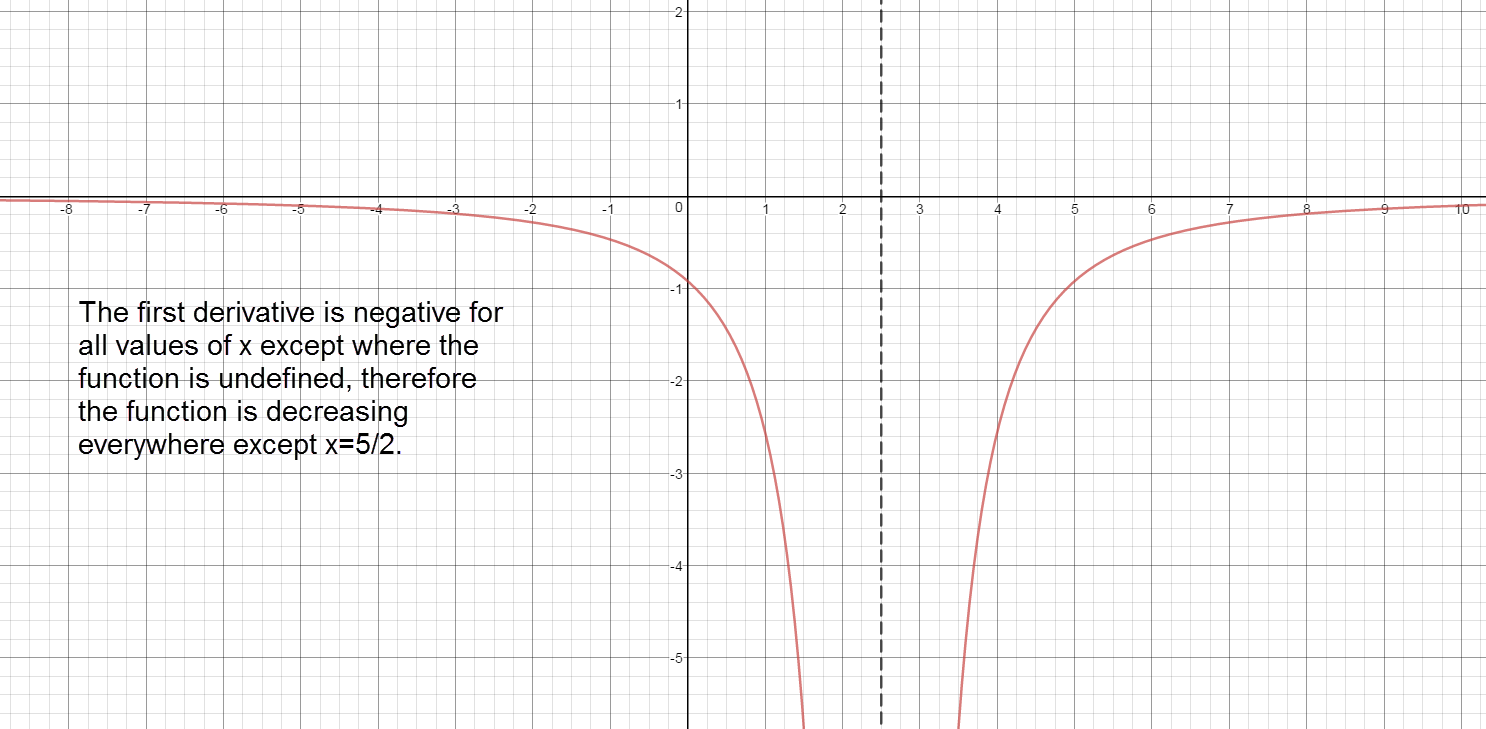
Sign graph of ${f}'(x)$ reading left to right: negative, ${f}'\left( \frac{5}{2} \right)\text{= undefined}$, negative Increasing:
The graph of the first derivative is never above the x axis. Therfore, there are no intervals where $f(x)$ is increasing.
Decreasing:
$\left( -\infty ,\frac{5}{2} \right)\cup \left( \frac{5}{2},\infty \right)$ The graph of the first derivative is always below the x axis. Therefore, the function is decreasing over the entire domain.
-
Local Maxima:
The first derivative never changes from positive to negative. There are no local maxima.
Local Minima:
The first derivative never changes from negative to positive. There are no local minima.

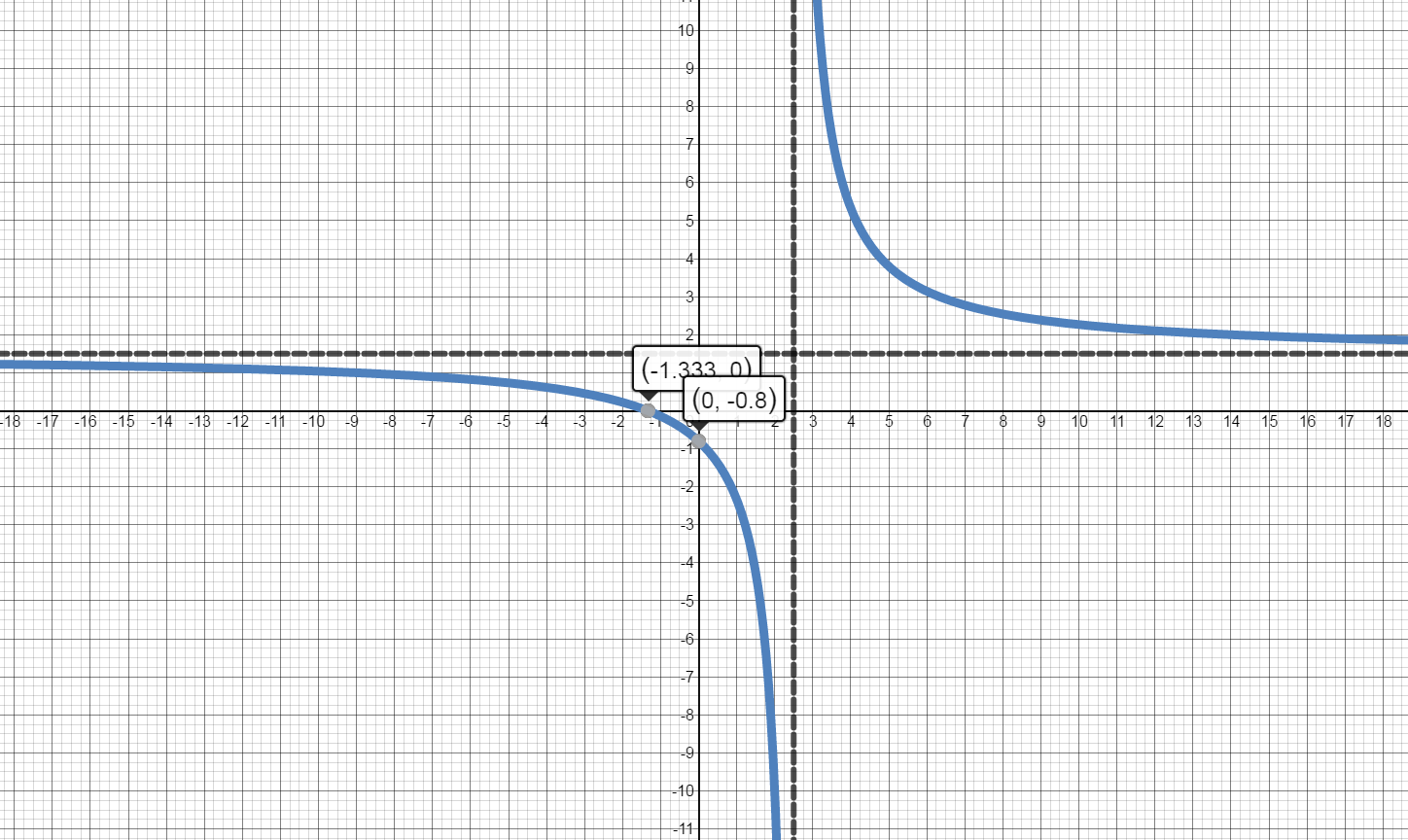
-
-
The annual first quarter change in revenue for Apple, Inc. is given by the regression model: $$f(x)=-0.005x^4+0.113x^3-0.889x^2+7.946x-5.346$$ where x is Years Since 1998.
Use the First Derivative Test to analyze $f'(x)$ and identify intervals of increase/decrease and extrema on the graph of $f(x)$.
$f'(x)=-0.02x^3+0.339x^2-1.778x+7.946$
-
Create the sign chart for $f'(x)$:
Identify the values of x where $f'(x)=0$:
$f'(x)=0$ at $x=12.358$
Values of x where $f'(x)$ is undefined:
There are no values of x where $f'(x)$ is undefined.
Values of x where $f(x)$ is undefined:
There are no values of x where $f(x)$ is undefined.
Separate the graph of $f'(x)$ into intervals using: $x=12.358$.
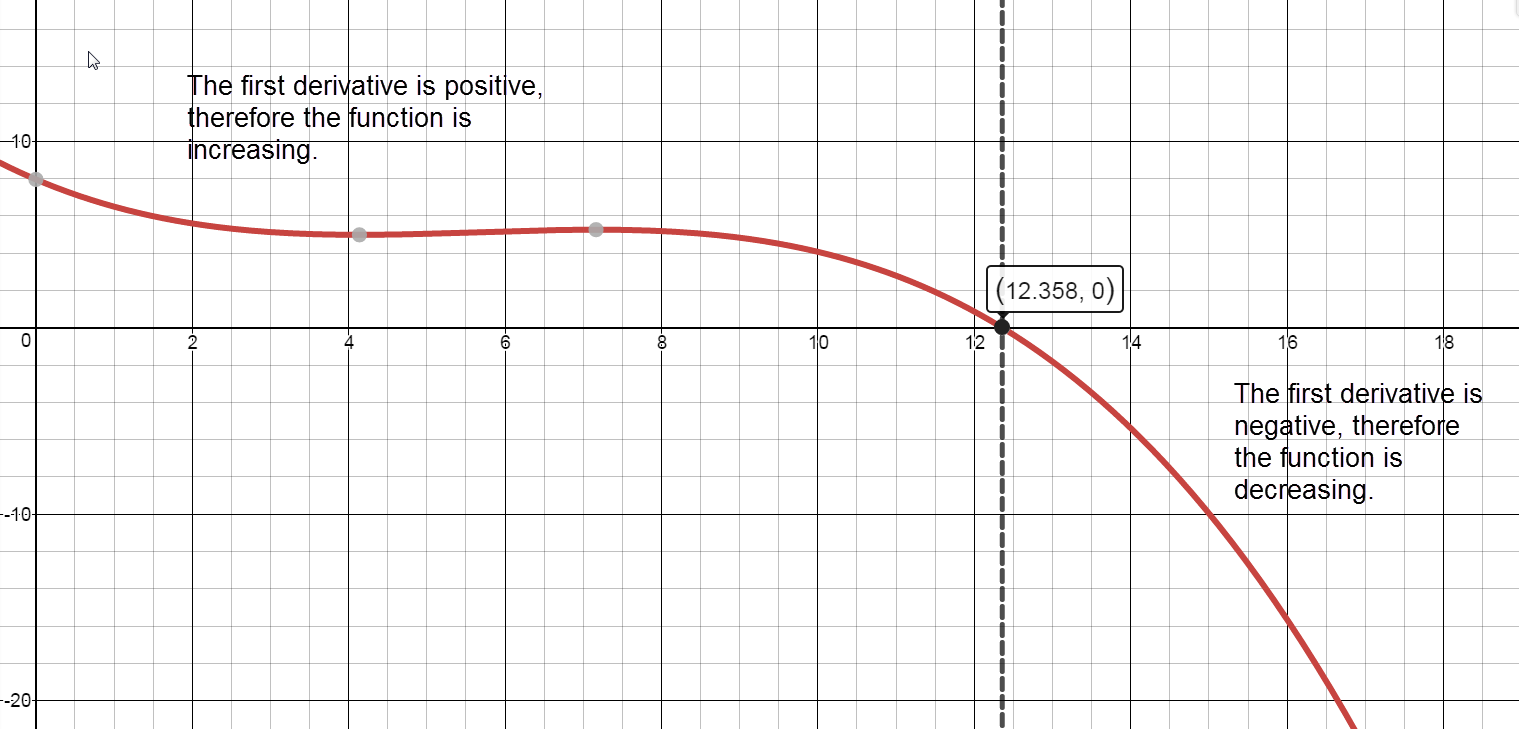
Sign graph of ${f}'(x)$ reading left to right: positive, ${f}'\left( 12.358 \right)=0$, negative Intervals of Increase and Intervals of Decrease
Increasing:
$[0,12.358)$
The percent change in revenue was increasing from 1998 into 2010.
Decreasing:$(12.358,18]$
The percent change in revenue was decreasing in 2010 through 2016.
- Extrema
Local maximum:
$(12.358, 53.732)$
From the model, the maximum percent change in revenue occurs in 2010 (at x=12.358 years after 1998).
Local minimum:There are no local minima.
-
-
Using data from the Federal Reserve, the Dow S&P 500 annual percent return on investments for the years 2008-2014 can be modeled by the following equation: $$A(t) = - 1.64{t^4} + 20.85{t^3} - 86.05{t^2} + 127.87t - 36.24$$ where t is in years since 2008 and A(t) is in percent.
Source: http://pages.stern.nyu.edu/~adamodar/New_Home_Page/datafile/histretSP.html
Use the First Derivative Test to analyze $A'(t)$ and identify intervals of increase/decrease and extrema on the graph of $A(t)$.
${A}'\left( t \right)=-6.56{{t}^{3}}+62.55{{t}^{2}}-172.10t+127.87$
-
Graph the critical numbers on a number line and determine the sign for each interval.
Values of t where ${A}'\left( t \right)=0$:
$0=-6.56{{t}^{3}}+62.55{{t}^{2}}-172.10t+127.87$
${A}'\left( t \right)=0$ when $t\approx 1.20$, $t\approx 3.10$, $t\approx 5.23$
Values of t where ${A}'\left( t \right)$ is undefined:
There are no values of t where ${A}'\left( t \right)$ is undefined.
Values of t where ${A}\left( t \right)$ is undefined:
There are no values of t where ${A}\left( t \right)$ is undefined.
Separate into intervals using: $t=1.20$, $t=3.10$ and $t=5.23$.

Sign graph of ${A}'(x)$ from left: positive, ${A}'\left( 1.20 \right)\approx 0$, negative, ${A}'\left( 3.10 \right)\approx 0$, positive, ${A}'\left( 5.23 \right)\approx 0$, negative Determine the intervals on which $A(t)$ is increasing/decreasing.
The function is increasing on the intervals: $\left( 0,1.20 \right)\cup \left( 3.10,5.23 \right).$
APR increased from 2008 into 2009 and from 2011 into 2013.
The function is decreasing on the intervals: $\left( 1.20,3.10 \right)\cup \left( 5.23,6 \right).$
APR decreased from 2009 into 2011 and in 2013.
-
Identify local maxima and minima for $A(t)$.
There are two Local Maxima at the points: $\left( 1.20,25.92 \right)$ and $\left( 5.23,34.50 \right).$
There is a Local Minimum at the point: $\left( 3.10,2.90 \right).$
-

